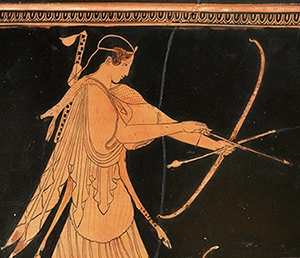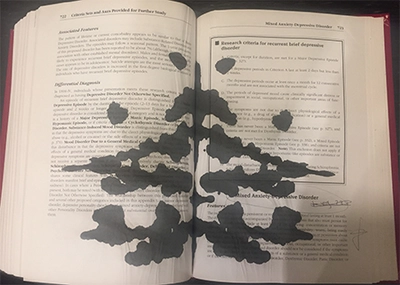ARAS Connections: Image and Archetype - 2021 Issue 1

The world has witnessed the most highly charged and feverish times in recent memory. In the United States, the toll of the pandemic, increased racial tension and violence, profound cultural and political divisions, deep economic distress and the doomsday scenarios of climate change have created a “syndemic”— an aggregation of concurrent epidemics in a population with psychological and biological interactions, which exacerbate the prognosis and burden of disease. What does an organization like ARAS do in such circumstances when “the spirit of the times” seems overburdened by collective stressors which bring to the surface archetypal apocalyptic fantasies from the “The Spirit of the Depths,” including extinction anxiety around the world—the fear not just the human race is in danger, but that all life on the planet is in danger?
Our contributors for this edition of ARAS Connections represent various threads that we like to cultivate simultaneously in the hopes of fostering a dialogue between the “Spirit of the Times” and “The Spirit of the Depths”. Jules Cashford, whose book The Moon: Symbol of Transformation is the best work of its kind, has long been mesmerized by Jan van Eyck’s Mystic Lamb. In this article she describes a remarkable transformation in the image of the Mystic Lamb brought about by the process of restoring the painting to more closely reveal the original face of the Lamb. Jules writes:
“In astonishing contrast, the new, which is to say original Lamb, with his mesmerizing eyes and steadfastly intense expression, appears to be asking us a question from the heart of the universe. ‘Who are you?’ the unflinching, yet still compassionate, gaze asks us. ‘What is the truth of you?’… What makes this Lamb so compelling is that the expression on his face is not just human; it is more than human, disclosing a sublime humanity such as we imagine belongs in the depths of the psyche.”
Perhaps there is no better time than now to be asking those questions of mankind that spring from the “Spirit of the Depths”: “Who are you? What is the truth of you?”
Valerie Harms' contribution, “The Superhero and the Villain” connects the archetypal and contemporary in a very different way. Valerie writes:
“Originally this essay did not plan on covering the divine and/or mythical heroes, such as Zeus, Christ, Buddha, or the Hindu or Muslim pantheon. Nor those very important persons, who are guided by a moral compass to help others, such as those who work in the front lines on behalf of coronavirus patients. Nor those scientists racing to develop vaccines against diseases. These many men and women are truly the unnamed superheroes of our time.” Against this backdrop, Valerie explores the mythology of Wonder Woman, Spiderman, Katniss Everdeen from “The Hunger Games” and Frodo from Tolkein’s Lord of the Rings.
And finally, in this truly potpourri offering from ARAS Connections, Nilton Maltz stretches our imaginative, symbolic range with his challenging and totally original paper, “An Artistic Embodiment of the Transcendent Function.” Nilton’s paper is most ambitious in its goals:
“Every artist has his or her own inspiration, and Jung's Analytical Psychology has been mine. Regarding this art project, I bought a copy of the American Psychiatric Association Diagnostic and Statistical Manual of Mental Disorders, fourth edition (DSM-IV), and every day I would open it at random and make a black ink blot on the page. Over time, a large collection of inkblots were generated inside the DSM book. In this paper, I am presenting some of these images as well as discussing analytical questions arising from them. I see the project as a package: the art work and the writing It could be said to reflect a coniunctio of the two. If ever art and analytical writing seemed to be opposites, or better yet a cluster, here, the visual and conceptual aspects are brought together.”
Welcome to ARAS Connections and the hope that this 2021 Spring edition is part of the beginning of new life on our planet.
Jan van Eyck’s Mystic Lamb

For the last ten years a team of dedicated picture restorers have been cleaning one of the masterpieces of Early Northern Renaissance painting - a massive triptych of 24 panels on oakwood in St. Bavo’s Cathedral in Ghent, known as the Ghent Altarpiece or more colloquially as ‘The Mystic Lamb.’ The painters were two brothers, Hubert and Jan van Eyck. The painting was begun by Hubert, the elder and, after Hubert’s death in 1426, completed by Jan in 1432. The closed wings explore the mystery of the Incarnation, and the open wings disclose the birth of the new order: the redemption of the world.
Only the central panel of the open wings is finished. Yet already a new vision appears, as though just freshly painted, and this is the face of the ‘Lamb of God’ - which seems to have completely changed. Or rather, the cleaning has revealed what Jan van Eyck actually painted over 500 years ago.
Imagine the restorers’ amazement when, after three years of meticulous work, an entirely new image shone forth from beneath five centuries of over-painting, the smoke of candles, and simply the passage of time.
Within a hundred years the original face had been painted over, giving us the gentle Lamb we have seen ever since: the compassionate face we know well through scripture – instantly identifiable, doctrinally exact, by now almost a consoling idea: 'Behold the Lamb of God who taketh away the sins of the world,’ the inscription on the altar beneath him says. This gentle Lamb forgives us but does not, in that moment, implicate us.
The Superhero and the Villain

I started this essay before the arrival of COVID-19; now we are well into it. Some call the pandemic a “zombie apocalypse because it—and all pandemics—are invisible threats, causing hundreds of thousands of deaths. More than wars. The need for superheroes is great but what kind?
Originally this essay did not plan on covering the divine and/or mythical heroes, such as Zeus, Christ, Buddha, or the Hindu or Muslim pantheon. Nor those very important persons, who are guided by a moral compass to help others, such as those who work in the front lines on behalf of coronavirus patients. Nor those scientists racing to develop vaccines against diseases. These many men and women are truly the unnamed superheroes of our time.
Nope, originally, this essay was intended to suggest how leaders of certain countries regard themselves as cultural superheroes. Case in point: President Trump portrayed as Rambo by his followers or Russian President Vladimir Putin posing bare-chested while fishing or North Korea’s leader Kim Jong-un riding a fierce white steed before launching a rocket. Or the dictatorial leaders of Turkey and Brazil, the authoritarian rulers in China and Venezuela. While these men would like to subsume the hero archetype, they are but small tyrants, in comparison with the imaginative cultural heroes.
The superheroes of the comics, movies, and books which gross over millions of dollars, have been much derided by intellectuals. Author Joseph O’Neill writes in The New Yorker: “The elevation of fantasy as a way of investigating the human experience has been taken to a depressing extreme.” While it’s easy to dismiss superhero movies and comics as trash, to do so is simply wrong-headed and out of touch with the world’s common culture. Better to ask what are the profound human needs reflected in the fascination with supermen or women? How do the superheroes of today evolve from archetypal myths? Are they of any use now?
An artistic embodiment of the transcendent function

This paper is an affirmation of the art of psychotherapy through a piece of mixed media conceptual visual art. In our practice as Jungian analysts we commit ourselves to an art that is embodied in our careful consideration of the unconscious. Our work on ourselves and with our patients is a process by which we and our analysands try to bring together conscious and unconscious tendencies. This sounds simple, but in the current spirit of our times, the unconscious and the ego are both either deified or vilified. Most psychotherapeutic systems either deny or diminish the unconscious. At the same time, our culture is influenced by new age ideals, including some superficial misunderstandings of eastern philosophies which preach the death of the ego. A third way or a balance between conscious and unconscious, is rarely found in the culture at large or in the discourse of our patients. The objective of this paper is to capture this balance in an embodied experience and write about it, using Jungian theory.
The importance of a balance of unconscious and conscious forces cannot be overestimated. Jung dedicated much of his work to this issue, especially in the final years of his life which focused on the fundamental question of how opposites are to exist and meet each other. That is, of course, more complex than a simple balancing, but it is a larger version of the same theme. Even though opposites show up in many places, the complexio oppositorum of conscious and unconscious seems to be the fundamental issue for a human life that is embraced by the wholeness of psyche, the conjunction of them both.
The final chapters of Jung’s ‘autobiography’ Memories, Dreams, Reflections (MDR) contain important thoughts regarding the mediation of conscious and unconscious opposite. For example, the final sentences of the chapter entitled On life after death: ‘But man’s task is the exact opposite: to become conscious of the contents that press upward from the unconscious. Neither should he persist in his unconsciousness, nor remain identical with the unconscious elements of his being, thus evading his destiny, which is to create more and more consciousness. As far as we can discern, the sole purpose of human existence is to kindle a light in the darkness of mere being. It may even be assumed that just as the unconscious affects us, so the increase in our consciousness affects the unconscious.’ (p. 326)
Read An artistic embodiment of the transcendent function in its entirety here.
New additions to the Archive!

Part of ARAS' mission is to present symbolic imagery as completely and thoroughly as possible. To that end, our archive is always evolving and expanding. We have made some recent improvements that we would like to tell you about. We have added:
- over 100 color images to the Egyptian section
- over 90 new Korean art images with brief art historical information
- 40 new Japanese art images with art historical information and brief description texts
We have also improved the bibliographic information for the images in the Egyptian section.
We hope you enjoy these new additions!
If you are not already a member, join our archive here!
Contents
Become a Member of ARAS!
Become a member of ARAS Online and you'll receive free, unlimited use of the entire archive of 17,000 images and 20,000 pages of commentary any time you wish—at home, in your office, or wherever you take your computer.
The entire contents of three magnificent ARAS books: An Encyclopedia of Archetypal Symbolism, The Body and The Book of Symbols are included in the archive. These books cost $330 when purchased on their own.
You can join ARAS Online instantly and search the archive immediately. If you have questions, please call (212) 697-3480 or email info@aras.org
We Value Your Ideas
As our newsletter grows to cover both the ARAS archive and the broad world of art and psyche, we're eager to have your suggestions and thoughts on how to improve it. Please send your comments to info@aras.org. We look forward to your input and will reply to every message.
Subscribe
If you're not already a subscriber and would like to receive subsequent issues of this newsletter by email at no cost, e-mail us at newsletter@aras.org.
